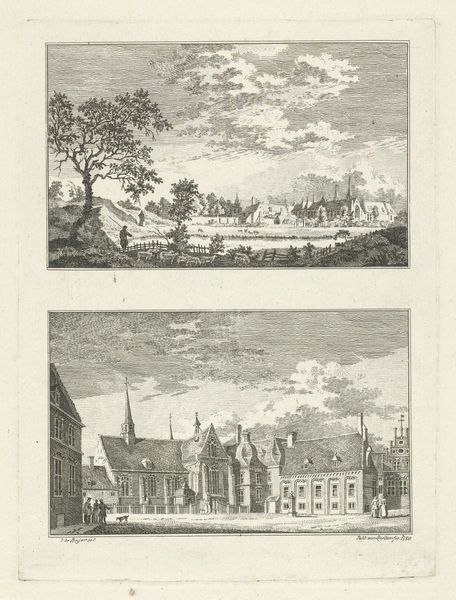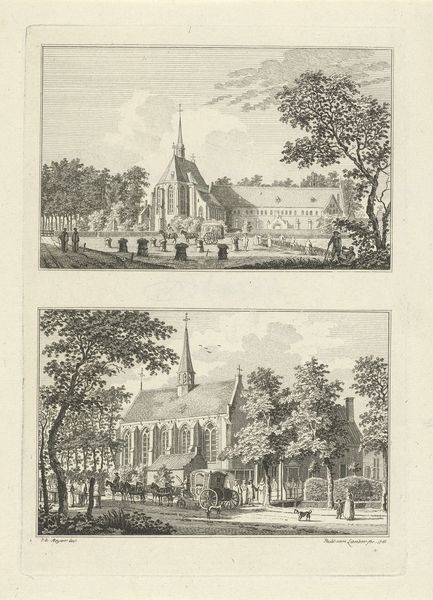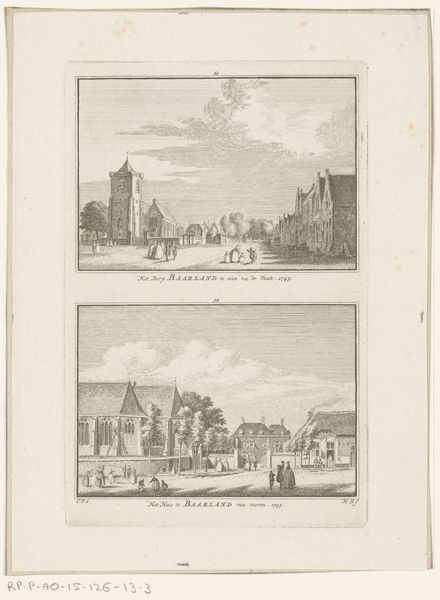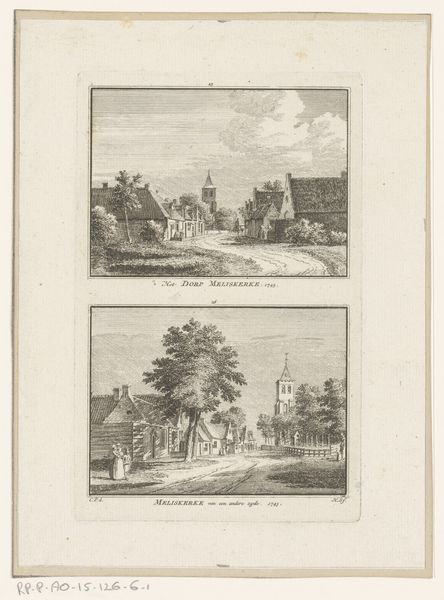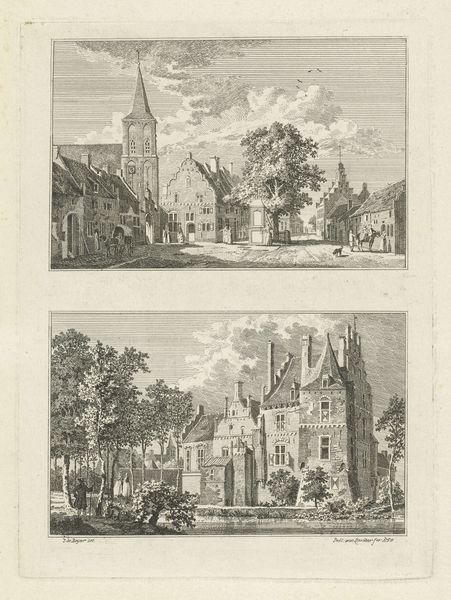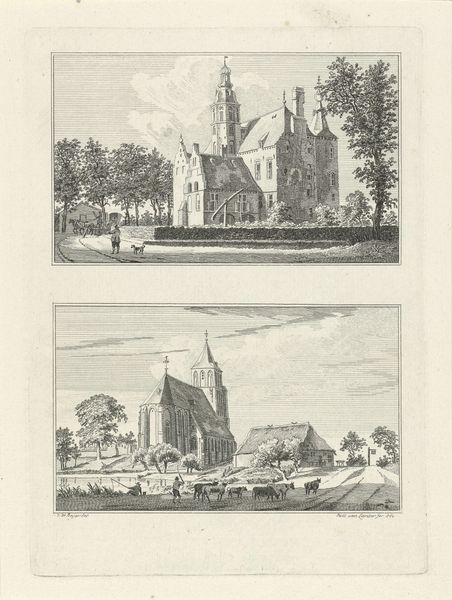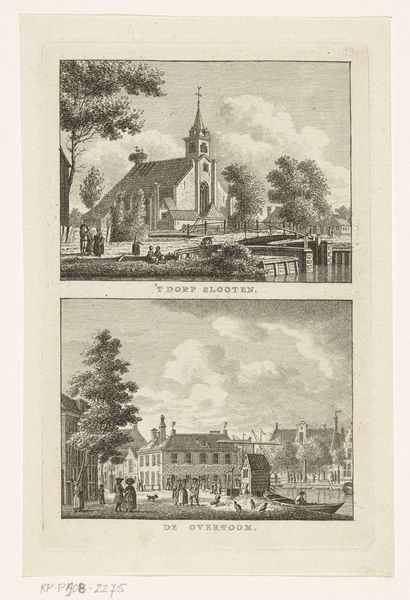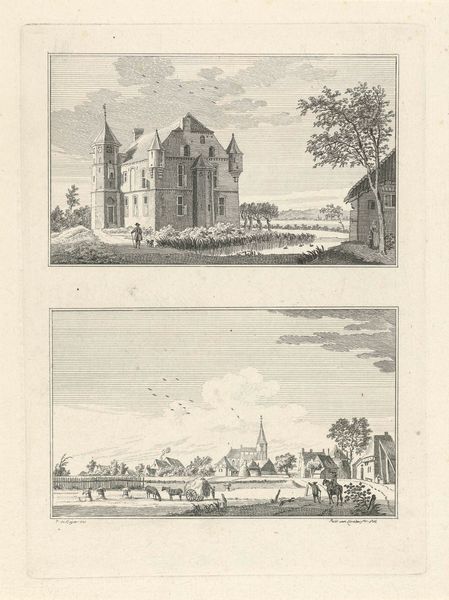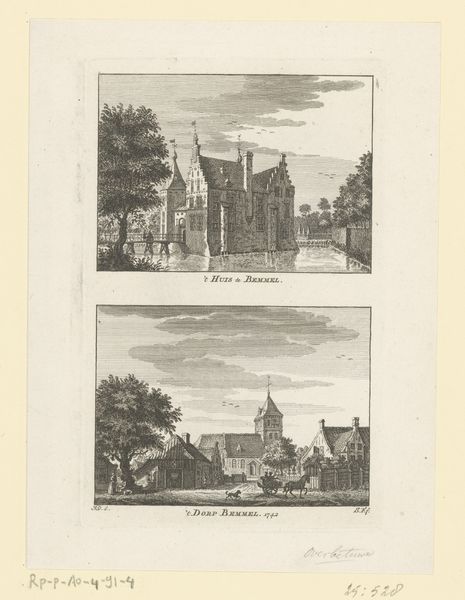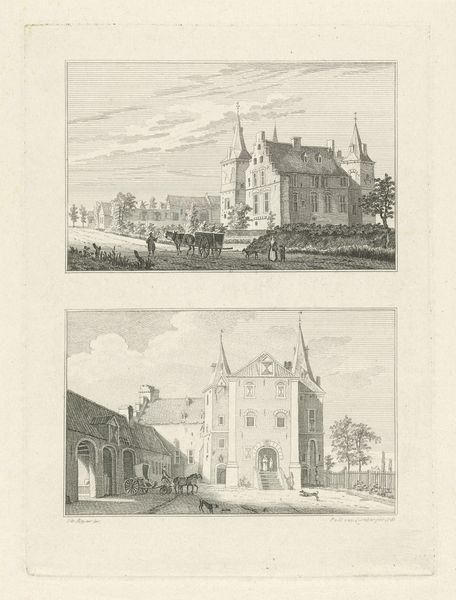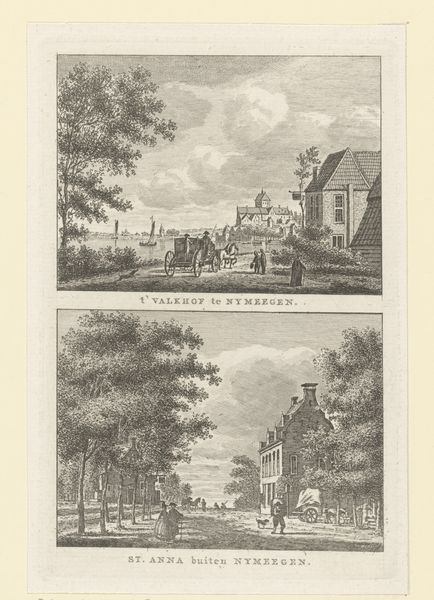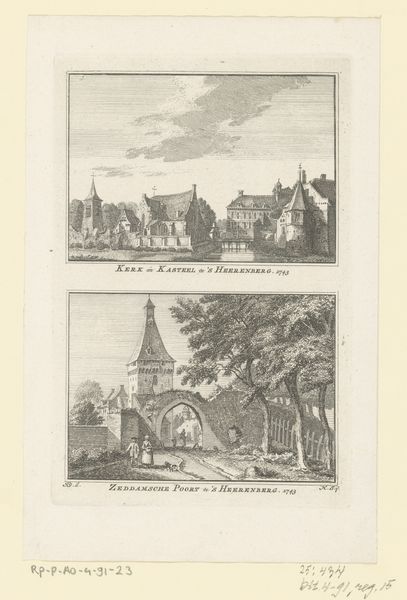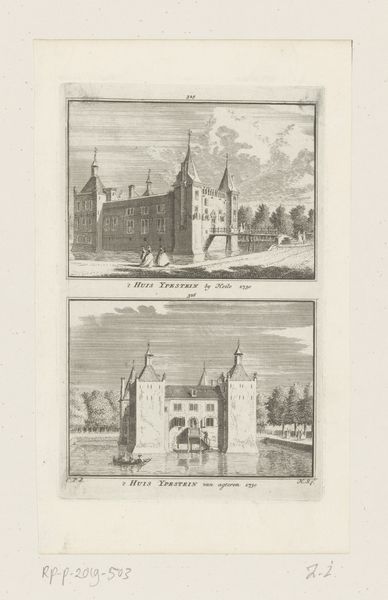
print, engraving
#
dutch-golden-age
# print
#
landscape
#
cityscape
#
engraving
Dimensions: height 205 mm, width 151 mm
Copyright: Rijks Museum: Open Domain
Curator: Welcome. We're standing before Paulus van Liender’s "Stadsgezichten te Uedem, 1744", which translates to "Cityscapes of Uedem," dating to around 1758. It's an engraving. Quite lovely in its detail, wouldn't you agree? Editor: Yes, a tranquil order pervades. Looking at it now, I sense an unexpected harmony – a whisper of old stones and distant dreams. It's as if the very air of that little town has been captured in ink. What kind of stories do you think the buildings would whisper, if they could talk? Curator: An intriguing thought. Focusing on the piece as a material artifact, the technique of engraving is fascinating. Imagine the labor involved – the deliberate, repetitive carving into the metal plate, the proofing, and the printing itself. It reflects a culture where meticulous craftsmanship was valued. The means of production become part of the aesthetic. It speaks volumes about Dutch Golden Age values. Editor: You're right, seeing that kind of intense labour connects you so directly. For me, though, there's also something about how these two views coexist on a single sheet that invites a contrast in perspective. From panoramic overview to detailed close-up, Liender presents both detachment and intimacy in a single breath. A double breath. It’s like seeing a town through the eyes of a surveyor, and those of someone deeply connected to its very fabric. Curator: Exactly, there’s both distance and deep connections – or even control. Given that printmaking allowed for reproductions, consider the implications for disseminating views and exerting soft influence via idealized cityscapes. Editor: Mmm, true. The print offers an interesting lens onto our human tendency to both idealize and, perhaps unconsciously, to manage, even master, our world and its narrative. That church steeple, anchoring the lower cityscape, becomes almost an assertion of control. A landmark to define everything else. The quiet tension of old stones and faith holding together daily lives! It makes one wonder what role that steeple plays for folks today. Curator: An excellent point. The church grounds us – historically, architecturally, and symbolically. As the primary subject in this part, it indicates the role of the institution in maintaining order within this place, Uedem. The lines, the perspective... Liender’s focus elevates this religious building over other quotidian, perhaps mercantile spaces in the town. Editor: It’s like this town's spine. Anyway, looking at it now after dissecting its history, there’s this haunting feeling… an uncanny sense of timelessness about it. Despite knowing the centuries that have passed, I'm pulled back, not just to this specific location but to that whole epoch. Curator: I couldn’t agree more. "Stadsgezichten te Uedem, 1744," viewed through our respective lenses, reminds us that an artwork’s meaning lies in its making and materials but also in our own experiences as we receive them across time.
Comments
No comments
Be the first to comment and join the conversation on the ultimate creative platform.
